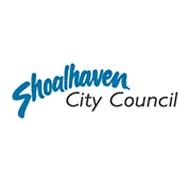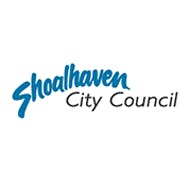St Georges Basin Floodplain Risk Management Study & Plan
Council has received financial support from the NSW Floodplain Management Program managed by the NSW Department of Climate Change, Energy, the Environment and Water (DCCEEW) to undertake the St Georges Basin Floodplain Risk Management Study and Plan. Assistance provided under this program is $2 from the Government for every $1 provided by the Council.
Council has engaged a consultant, Rhelm, to assist with the preparation of this study.
The St Georges Basin Floodplain Risk Management Study and Plan will supersede the previous St Georges Basin Floodplain Risk Management Study and Plan (Webb, McKeon and Associates, 2006) and St Georges Basin Floodplain Risk Management Study and Plan – Climate Change Assessment (Webb, McKeon and Associates, 2013).
Background
The NSW Government Flood Prone Land Policy aims to make the community more flood resilient. It accomplishes this by reducing the impacts of flooding on owners and occupiers of flood-prone property and by reducing public and private losses from flooding.
The St Georges Basin Flood Study (Cardno, 2022) was adopted by Council in early 2023. This completed the first two stages of the flood risk management process (refer figure below).

A Flood Study is a technical project that identifies flood behaviour such as depth, velocity and extent across the floodplain for a wide range of flood events: from small more frequent events to extreme less frequent events. It aims to provide an understanding of the full range of flood behaviour and their consequences in the study area. It involves consideration of the local flood history, available flood data, and the development of flood models. Flood models developed for the St Georges Basin Flood Study (Cardno, 2022) were calibrated and verified against historic flood events to ensure they can replicate actual flood behaviour in the catchment. These models were then used to produce flood information such as depth, velocity and extent mapping for the full range of potential flood events.
Objectives
The next stages of the flood risk management process include the completion of a Floodplain Risk Management Study and Floodplain Risk Management Plan.
The St Georges Basin Floodplain Risk Management Study will utilise the flood information developed in the St Georges Basin Flood Study (Cardno, 2022) to investigate possible mitigation options to reduce flood damages (impacts) and to manage flood risk. It allows for testing and investigating practical, feasible and economic management measures, including structural and non-structural measures, to manage existing, future and residual flood risk. The St Georges Basin Floodplain Risk Management Study will provide a basis for informing the development of the St Georges Basin Floodplain Risk Management Plan.
The St Georges Basin Floodplain Risk Management Plan will document the decisions on the management of flood risk within the floodplain into the future. The Plan will outline a range of measures to manage risk effectively and efficiently, using the investigations undertaken as part of the St Georges Basin Floodplain Risk Management Study. This will include a prioritised implementation strategy, which will detail how adopted measures should be implemented. Flood mitigation measures included in a Floodplain Risk Management Plan are eligible for financial support from the NSW Floodplain Management Program managed by DCCEEW.
The objective of this study is to improve understanding of flood behaviour and impacts, and better inform management of flood risk in the study area in consideration of the available information, and relevant standards and guidelines.
This project is being undertaken in accordance with the NSW Flood Prone Land Policy, the NSW Flood Risk Management Manual (2023) and in close collaboration with the NSW State Emergency Services (SES), the NSW DCCEEW, and other agencies and stakeholders as required.
Community Consultation
As part of the St Georges Basin Flood Study (2022) public exhibition and community consultation phase, Council requested input from the community regarding specific flood mitigation options to be considered as part of the St Georges Basin Floodplain Risk Management Study and Plan. As a result, initial community consultation will not be undertaken as part of this study, as this feedback has already been obtained from the community. Council, however, will consider additional mitigation measures (to what is listed below) that the community would like to be considered in this investigation. Feedback can be provided to Council at Floodplain.Management@shoalhaven.nsw.gov.au.
Comprehensive and targeted community consultation will be undertaken for the potential mitigation measures investigated in the draft St Georges Basin Floodplain Risk Management Study and Plan prior to the completion of the St Georges Basin Floodplain Risk Management Plan.
Potential Flood Mitigation Measures
A number of potential mitigation options were identified from community consultation for the St Georges Basin Flood Study (2022). These measures are summarised below and will be investigated as part of the St Georges Basin Floodplain Risk Management Study and Plan. The floor level survey information collected as part of the Shoalhaven LGA Floor Level Survey for Flood Planning project will be used to undertake flood damage assessments and assist to investigate the viability of potential flood mitigation measures.
- Flood Modification:
- Larmer Avenue bridge improvements.
- Levees along lower Tomerong Creek at Sanctuary Point.
- The Park Drive and Mountain Street cumulative fill strategy.
- Fairview Crescent levee or cumulative fill strategy.
- Sussex Inlet cumulative fill strategy / house raising.
- Investigate Sussex Inlet Channel modification/improvement. This needs to be undertaken for any targeted dredging as identified from the St Georges Basin, Sussex Inlet, Swan Lake, and Berrara Creek Coastal Management Program (CMP).
- Emergency Management:
- Provide gated flood free access roads from Erowal Bay and Wrights Beach.
- Wool Road and Larmer Ave Road raising.
- Sussex Inlet Road and Springs Road raising.
- Jacobs Drive road raising (in combination with Sussex Inlet fill strategy).
- The Park Drive road raising (in combination with Park Drive and Mountain Street cumulative fill strategy).
- Flood Education to improve flood awareness and preparedness.
- Potential mitigation options identified from Lower Shoalhaven River and St Georges Basin Flood Evacuation Capability Assessment (FECA) investigation in which flood evacuation capacity deficiency is identified from the FECA. This could include road raising, local bridge/culverts upgrades, additional road network capacity, evacuation route raising, construction of flood free evacuation routes etc.
- Planning and Property:
- Voluntary house raising, house purchase or land swap.
- Foreshore areas house raising.
- The Park Drive, Sanctuary Point voluntary purchase/house raising.
- Sussex Inlet cumulative fill strategy/house raising.
- Review flood planning levels for future development.
- Strategic designated cumulative fill policy for future development.
- Rezoning and/or back zoning of high risk areas.
The suitability of measures previously identified in the St Georges Basin Floodplain Risk Management Study and Plan (Webb, McKeon and Associates, 2006) and St Georges Basin Floodplain Risk Management Study and Plan – Climate Change Assessment (Webb, McKeon and Associates, 2013) will also be considered where they have not yet been implemented. These previous studies will be superseded by the St Georges Basin Floodplain Risk Management Study and Plan when completed.
Management actions being investigated as part of the St Georges Basin, Sussex Inlet and Berrara Creek Coastal Management Program (CMP) will be reviewed and included in the St Georges Basin Floodplain Risk Management Study and Plan if there is a potential flood risk management benefit requiring further investigation.
The outcome of this project aims to help protect you, your family, and your property from flooding.



